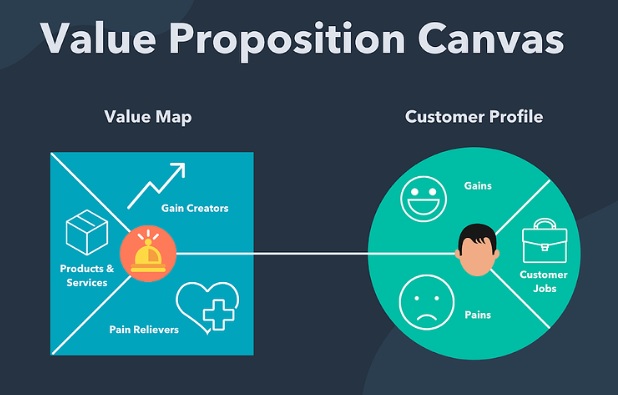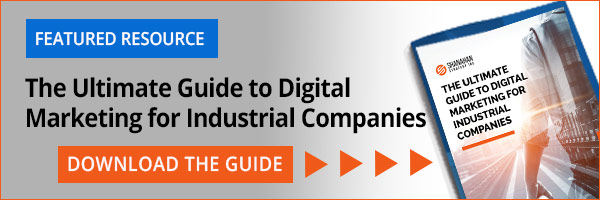Effective value propositions clearly outline why a customer should do business with you instead of your competition. It builds trust with your customers while delivering clear, concise information.
But understanding a value proposition and knowing how to write one are two entirely different things.
Want to learn how to write an effective value proposition? Keep reading to learn what elements you need in a good value proposition and to see some powerful examples.
Key Takeaways:
- A value proposition tells customers why they should choose your business over the competition.
- A value proposition differs from other marketing content like taglines, catchphrases, and mission statements.
- Create a customer profile and a business value map to help guide you towards an effective value proposition.
What Is a Value Proposition?
A value proposition is an essential tool in driving conversion on your website. You need a value proposition that accurately and concisely represents your products and brand while also showing customers why you are the best choice.
The value proposition is usually no longer than a few sentences. You can use your value proposition in a variety of ways:
- When answering “What does your company do?”
- On your website to draw in leads and convert them to customers
- When seeking out new investors
Value propositions need to quickly identify how your business can solve a problem for your potential customers. This video does an excellent job of describing value propositions and how and where to use them, including in product listings.
What a Value Proposition Isn’t
To further clarify what a value proposition is, here are a few examples of what it isn’t:
- A mission statement: Your organization’s mission statement details your goals and objectives. A value proposition is more product-oriented, while your mission statement is more goal-oriented. For example, a business might have a mission statement of delivering superior products, while its value proposition is choosing the best materials instead of the cheapest.
- A catchphrase: A catchphrase is a short slogan frequently used in marketing materials. Catchphrases are used in ads, while value propositions usually aren’t.
- Tagline: A tagline is a short statement that shares what your business represents. One of the most well-known taglines comes from Nike: “Just do it.” This differs from their value proposition of “Customizable performance or lifestyle sneakers with unique colorways and materials.”
While a tagline, catchphrase, and mission statement are all valuable assets in your marketing toolbox, they are not the same as a value proposition. Most customers do not choose businesses based on these statements.
How to Create a Value Proposition Canvas
One strategy HubSpot recommends is making a value proposition canvas. This is a visual representation of your customers’ needs and how your business can fulfill those needs.

1. Create a Customer Profile
The first part of your value proposition canvas focuses on your customers. You need to create a customer profile to represent the general needs of your typical customer. Focus on three areas:
- Customer jobs: Think about what task your customer wants to complete using your products or services. This will be the purpose of your business, according to your customers.
- Customer gains: What do your customers hope to gain when working with your company? Your customers have certain expectations of what your products will do for them.
- Customer pain points: While your customers are completing their “customer jobs” using your products, are they having any problems? What are their frustrations? Consider these pain points and how your products solve them when creating your value proposition.
2. Create a Value Map
Now, you will focus on your business and what you can offer your customers.
- Gain creators: What features on your products do your customers love? These are features that create benefits for your customers. Do your customers have social or financial goals that your products help promote?
- Products and services: Create a list of your most helpful products and services. These products have the most benefits and alleviate the most pain points.
- Pain relievers: How does your business help your customers overcome common pain points?
3. Check If Your Value Map Aligns with Your Customer Profile
With your value map and customer profile ready, you can see how well they match. Start listing your products and services based on how well they fit within the needs of your customer profile.
Elements of Effective Value Propositions
The best place to use your value proposition is on your website. It should have prime placement “above the fold” on your homepage and other sites.
An effective value proposition typically includes three elements:
- A headline
- Paragraph text
- A visual element
1.Attention-Grabbing Headline
The headline is an essential part of your value proposition. It should grab your customers’ attention and tell them the main benefit they will get from choosing your business. While the headline can have creative elements, its primary objective is too be straightforward and concise.
2. Detailed Paragraph Text
You can give your customers more details about what you offer and why they should choose you with the paragraph text. Elaborate on what you presented in the headline. However, keep the text short and to the point.
3. Powerful Visual Element
While a visual element is not always necessary, the right image, video, or infographic can add a lot of power to your value proposition. Whatever you choose, it should enhance and not detract from your message.
Example of a Value Proposition
To get an idea of what a value proposition looks like in the real world, here is an example from Southwest Products.

The headline in the value proposition reads, “Our experience means value for your business.” With just this line, customers can infer that Southwest Products has been in business for a long time. The paragraph text shares that they have been in the engineering and manufacturing business for more than 60 years. Finally, the visual element is a 1-minute video that highlights its operations.
Another example of a good value proposition comes from Cummins. Cummins’s overview page for its generators has a value proposition headline that reads, “Generators for every need.” A customer might read this and think, “Do they have what I need?” The paragraph text then emphasizes the various types of generators and the range of power outputs available. The final detail is an image of a Cummins generator.
Share Your Value More Effectively with Shanahan Strategy
Creating an effective value proposition can feel overwhelming if you do not have the right tools. If you need a new marketing strategy that includes a revamped value proposition, Shanahan Strategy is here to help.
We specialize in working with industrial companies and helping them improve their sales and increase their market share. We will work with you to create a strategic marketing plan that matches your goals and exceeds your customer expectations.
Ready for customers to better understand your value? Contact Shanahan Strategy today to get started.

